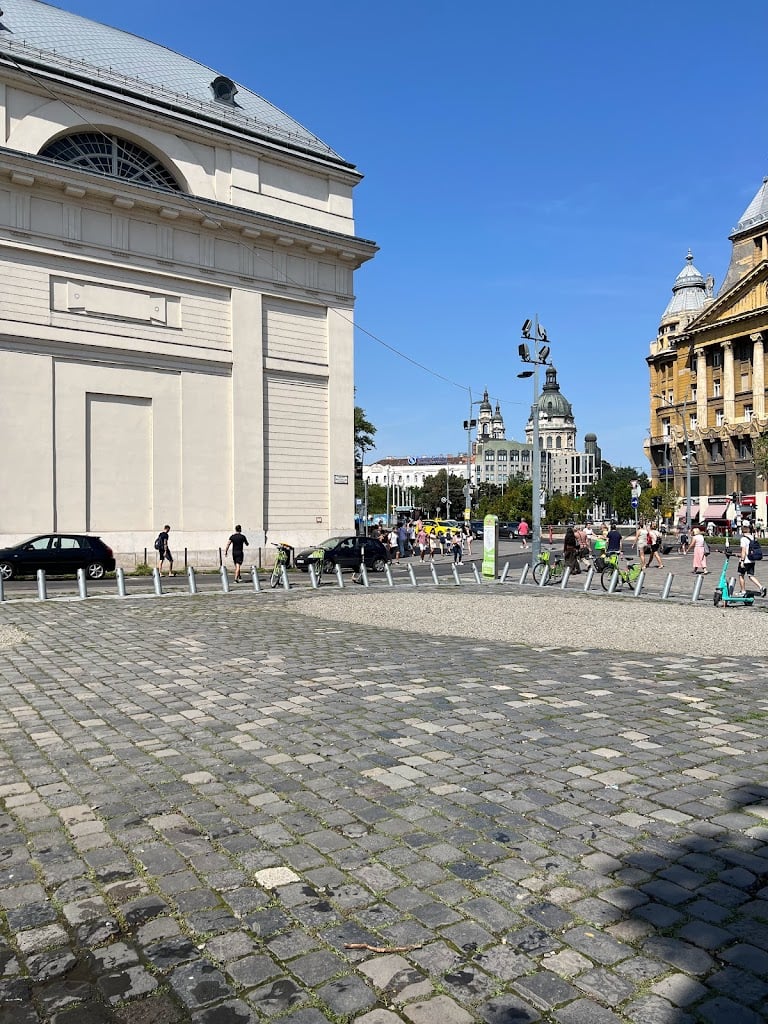Evangelical Church on Deák square (Deák téri Evangélikus Templom)



Ask ThatchGPT
Suggest a local expert to plan my trip
Suggest an unique itinerary for my Budapest trip
What foods do Budapest locals eat
What are some true hidden gems in Budapest
Help me brainstorm trip ideas for Budapest
Help me plan a family-friendly trip to Budapest
What people say
Pedro Pereira
Available for hire
"The Deák Square Lutheran Church, located in the heart of Budapest on Deák Ferenc Square (District V), is the oldest and most prominent Lutheran church in the city. Built in classicist style, this hall church is notable for lacking a tower, distinguishing it from many other churches. It is the largest Protestant church in Budapest and serves as the center of the city's evangelical community. Along with the church, several other evangelical institutions occupy the surrounding block, including an evangelical high school, pastor's office, pastor's apartments, bookstore, museum, and kindergarten, collectively referred to as *Insula Lutherana* or "Evangelical Island."
The church's façade is adorned with four Doric columns and a plain triangular pediment, resting on a main cornice decorated with triglyphs and metopes. The building is topped with a large, convex tin roof. Inside, the church features a rectangular hall with a double gallery. The altar, crafted by Mihály Pollack, depicts Raffaello's *Transfiguration* (Transfiguration of Christ on the Mount of Tábor), painted by Ferenc Lochbichler. The pulpit and baptismal font, made of red marble, were created by Lőrinc Dunaiszky.
Construction of the church began in 1799 and was completed in 1808, based on plans by Mihály Pollack. It was briefly used as a military clothing warehouse from July 1809 to 1811 before being consecrated in 1811. The church's double gallery was added in 1820, and in 1856, József Hild designed the church's current main façade, featuring Doric pillars and a tympanum. Over the years, the church has undergone several changes, including the removal of its classicist tower in 1875 due to structural concerns and the replacement of its vaulted ceiling with a coffered design. It was damaged during both the Second World War and the construction of the M2 metro line. In the early 2000s, the church received a small, computer-controlled set of bells that chime several times daily. The most recent external renovation occurred in 2003.
The church has historical significance beyond its architecture. During the Pest flood of March 1838, it served as a refuge for many. Lajos Kossuth, a key figure in Hungarian history, baptized his sons Ferenc and Lajos Tivadar here, a fact commemorated by a plaque on the façade. The church also honors the legacies of key figures in Protestant history, with two bronze reliefs commemorating the 500th and 300th anniversaries of Martin Luther's and Johann Sebastian Bach's births, respectively.
The church has been the site of numerous important events in the Hungarian Evangelical Church. It hosts regular services every Sunday and holiday and has been home to the Deák Square Organ Musical Devotion series since 1985 and the Budapest Bach Week every June since 1990. Many bishops and church district supervisors of the Bánya and Southern Lutheran Church Districts have been installed here. The church's carillon plays the Evangelical main hymn of the week every full hour, adding to the church's unique atmosphere. The church is also accessible to people with disabilities from the courtyard."
Read more in:
Mentioned in these guides
About Evangelical Church on Deák square (Deák téri Evangélikus Templom)
Get the inside scoop on Evangelical Church on Deák square (Deák téri Evangélikus Templom) from local experts, travel creators, and tastemakers. Browse genuine trip notes, Evangelical Church on Deák square (Deák téri Evangélikus Templom) reviews, photos, travel guides, and itineraries from real travelers and plan your trip with confidence.
Website
Phone
Save this spot for later or start mapping out a new trip today
Try our AI Travel Assistant and get instant answers to any questions about your trip.
Ask ThatchGPT
